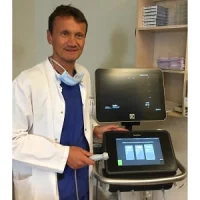Respiratory Motion, Inc. – Research presented at The Deutsche Anesthesia Congress (DAC) Shows Minute Ventilation Monitoring may be preferable to indirect measurement using EtCO2, for non-intubated patients.
The study "Evaluation of the Relationship between Non-Invasive Minute Ventilation and End-Tidal CO2 in Patients Undergoing General vs. Spinal Anesthesia" points to the value of Minute Ventilation, as direct measure of adequacy of ventilation, in monitoring non-intubated patients for potentially life-threatening Opioid Induced Respiratory Depression.
Minute Ventilation monitoring, also referred to as "Respiratory Volume Monitoring" (RVM) and a direct measure of respiratory compromise, may be preferable for primary continuous monitoring of adequate ventilation of non-intubated patients vs. the indirect assessment of adequate ventilation using EtCO2.
Opioids are commonly used for pain control in patients undergoing orthopedic surgery. However, they can cause Opioid Induced Respiratory Depression (OIRD) and Post-Operative-Apnea (POA) –where patients cease breathing. To reduce the risk of these complications, continuous respiratory monitoring is necessary both for intubated and non-intubated patients. Until recently, reliable and continuous methods for respiratory monitoring have only been available for intubated patients.
Capnography (EtCO2), one such method, however EtCO2 has proven unreliable in non-intubated patients. Non-intubated patients are those who are spontaneously breathing, not on a ventilator and therefore most at risk for OIRD or adverse respiratory events following administration of opioids. Capnography is an adequate solution for confirming endotracheal (ET) tube placement and monitoring adequacy of ventilation in intubated (on a mechanical ventilator) patients. Variables such as sensor positioning, changes in respiratory patterns, and changes in oxygen supply all distort the measurements provided by capnography in non-intubated patients. Because it is an indirect indicator of respiratory compromise, diagnosis is often delayed and readings are often false. A novel, noninvasive respiratory volume monitor (RVM) can provide real-time measurements of minute ventilation (MV), tidal volume (TV) and respiratory rate (RR) in both intubated and non-intubated patients.
Previous studies have indicated that the RVM measurements are accurate (errors less than 10% for MV and TV and less than 3% for RR). Studied, on 153 patients, was the relationship between EtCO2 and MV in three separate groups: intubated surgical patients under general anesthesia (GA), non-intubated surgical patients awake and under spinal anesthesia (SA), awake spontaneously breathing volunteers.
Among the key findings of the study of the 153 patient study was, for spontaneously breathing patients, MV had a substantially greater the sensitivity changes in ventilation than etCO2. This was demonstrated by an over 7-fold greater change in MV produced only half the variation in EtCO2 seen in intubated patients.
Summary of Important Study Conclusions
- "As a primary measurement, RVM may provide better data to indicate adequate or to detect inadequate ventilation, which can improve patient safety."
- "RVM may be preferable for primary continuous monitoring of adequate ventilation of non-intubated patients vs. the indirect assessment of adequate ventilation using EtCO2."
- "EtCO2 provides a suboptimal solution for respiratory monitoring in non-intubated patients because of its low sensitivity to changes in MV and bias introduced by a nasal cannula."
- "EtCO2 offers a good solution for ventilation monitoring in intubated patients because of its high sensitivity to changes in MV in that setting."










